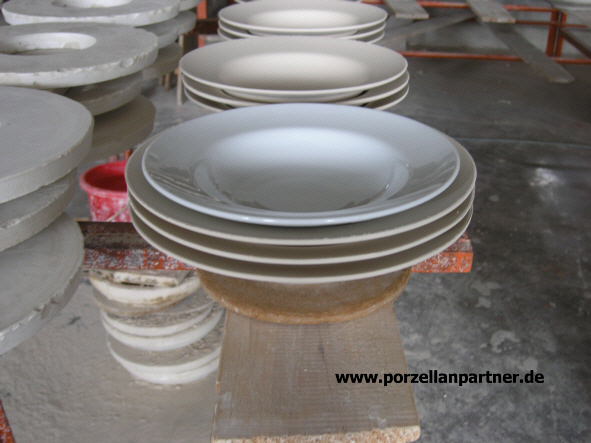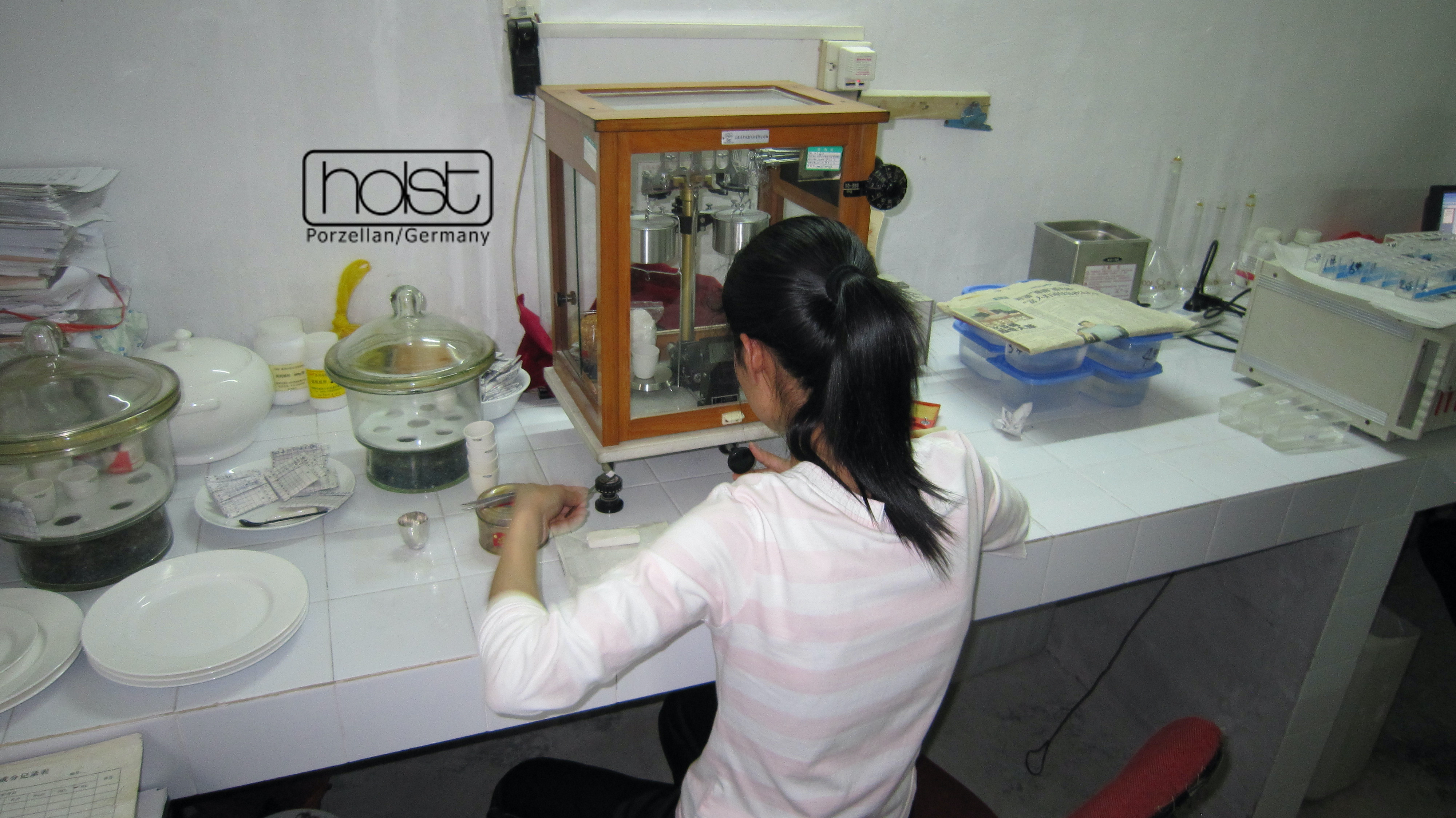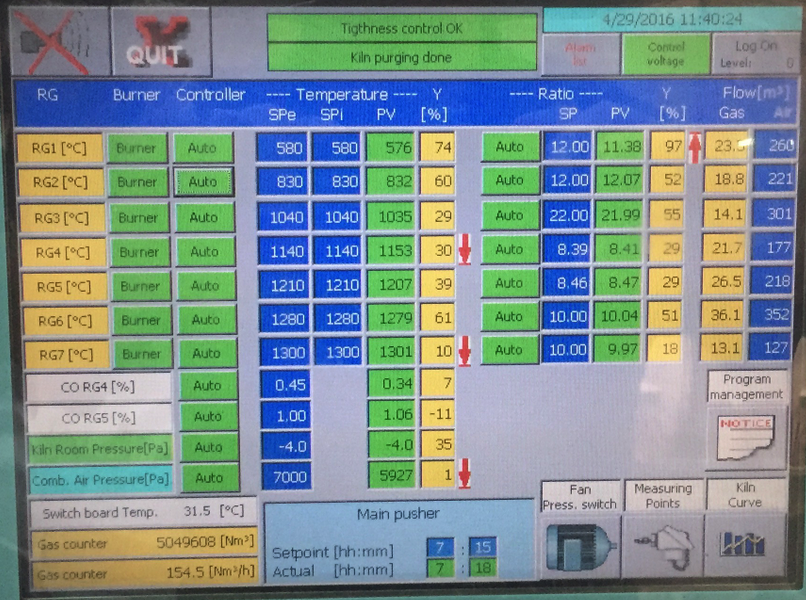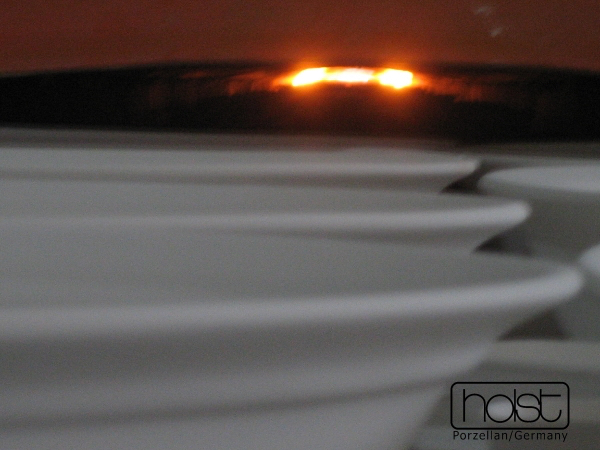Shrinkage
Shrinkage

Shrinkage in general is the change in volume of a material or workpiece without removing material or applying pressure. Shrinkage takes place through drying, cooling or chemical or physical remodelling mechanisms in the material. Shrinkage through drying is often reversible, so the material can also swell.
The shrinkage of porcelain is a non-reversible consequence of the sintering process in which fine-grained ceramic materials and minerals are heated at temperatures below the melting temperature of the main components so that the shape of the workpiece is preserved. This usually results in shrinkage because the particles of the starting material become denser and pore spaces are filled up. A basic distinction is made between solid phase sintering and liquid phase sintering, which also involves a melt.
Depending on the material structure, shrinkage may also be anisotropic (e.g. wood during drying). If shrinkage is inhomogeneous (e.g. during cooling or drying from the outside to the inside), shrinkage cracks may occur if the tensile stresses occurring in the material exceed its tensile strength. Otherwise, temporary or, in the case of ductility, latent stresses may occur in the material (residual stress). One parameter for shrinkage is the shrinkage value.
A basic distinction is made between solid phase sintering and liquid phase sintering, in which a melt is also produced.
Why does porcelain shrink at all?
At the stage of forming by pressing, rolling, turning or casting, the porcelain mass is wet. If the moisture is removed from the body, the body contracts and condenses. In hard firing, an irreversible consequence of the sintering process is created, the raw materials fuse and condense into each other, water molecules escape and the pore spaces are filled up by the mineral melt.
Depending on the composition of the raw materials and the manufacturing method used, the porcelain body shrinks, according to Hans Friedl, up to 16%. This value of experience was probably rather related to the German porcelain industry, because internationally we have already encountered shrinkage of 20% and more.
Using our rolled pasta plate 26 cm as an example, the picture above shows how enormously the removal of moisture changes the proportions of the porcelain. The picture shows one and the same plate! Below before firing, after the first drying and standing on it the finished end product. The plate has lost about 15% of its size during production!
Calculating this shrinkage precisely in order to end up with a stacked bowl or a rectangular plate of the desired size and height, where one looks like the other, makes the production of porcelain so demanding. The modeler of a porcelain mold is actually a craftsman with trained mathematical and physical skills.
Does shrinkage affect the quality of porcelain?
This question can be answered with a clear "YES"! Although the shrinkage of porcelain can be derived from experience, it can never be calculated exactly. The reaction of the raw materials of porcelain are very different, because they are mostly obtained from mineral raw materials. Just as no diamond is like any other, so is quartz, feldspar and kaolin. Even the burning content of the firing of a porcelain kiln (quality of the gas) influences the degree of shrinkage.

Good, high-quality manufacturers of porcelain regularly monitor the composition of raw materials and their content in their own laboratories. In this way, they try to avoid undesirable shrinkage tolerances and ensure consistent quality.

Even computer-controlled monitoring and control units cannot adjust the furnace so precisely that shrinkage tolerances can be completely excluded or calculated. The measuring points of such control units are always located in the outer areas of the fire compartments and can never measure the atmosphere in the kiln cars. Even the arrangement of hollow and flat parts considerably affects the furnace atmosphere.
The stages of shrinkage
Depending on the composition of the raw materials and type of shaping, the shrinkage of porcelain can be divided into the following phases.
- Drying process 1-3%
- Biscuit firing 10-12%
- Hard firing 12-15%
- Drying process 3-5%
- Single firing 14-22%
Conclusion

It is due to the material and firing temperatures of more than 1,320 °C that porcelain ultimately always suffers deformation. In the many decades of our work for and with porcelain, we have never encountered a plate, no matter what factory or country, that is perfectly round using mathematical precision! Porcelain always has - sometimes small and sometimes large - shrinkage tolerances. These can be derived as a rule of thumb as follows.
- Biscuit firing basically reduces unwanted shrinkage tolerances
- The longer the drying process, the lower the shrinkage tolerance
- Single firing increases shrinkage tolerances
- Reduction firing reduces shrinkage tolerances
- The lower the firing temperature, the lower the shrinkage tolerances
- The longer the firing time, the lower the shrinkage tolerance
- Isostatically pressed ware generally shrinks less than other
